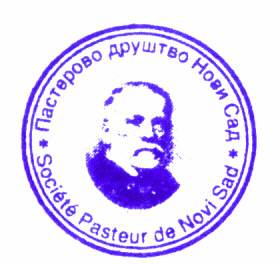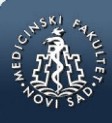md-medicaldata
Main menu:
- Naslovna/Home
- Arhiva/Archive
- Godina 2024, Broj 1
- Godina 2023, Broj 3
- Godina 2023, Broj 1-2
- Godina 2022, Broj 3
- Godina 2022, Broj 1-2
- Godina 2021, Broj 3-4
- Godina 2021, Broj 2
- Godina 2021, Broj 1
- Godina 2020, Broj 4
- Godina 2020, Broj 3
- Godina 2020, Broj 2
- Godina 2020, Broj 1
- Godina 2019, Broj 3
- Godina 2019, Broj 2
- Godina 2019, Broj 1
- Godina 2018, Broj 4
- Godina 2018, Broj 3
- Godina 2018, Broj 2
- Godina 2018, Broj 1
- Godina 2017, Broj 4
- Godina 2017, Broj 3
- Godina 2017, Broj 2
- Godina 2017, Broj 1
- Godina 2016, Broj 4
- Godina 2016, Broj 3
- Godina 2016, Broj 2
- Godina 2016, Broj 1
- Godina 2015, Broj 4
- Godina 2015, Broj 3
- Godina 2015, Broj 2
- Godina 2015, Broj 1
- Godina 2014, Broj 4
- Godina 2014, Broj 3
- Godina 2014, Broj 2
- Godina 2014, Broj 1
- Godina 2013, Broj 4
- Godina 2013, Broj 3
- Godina 2013, Broj 2
- Godina 2013, Broj 1
- Godina 2012, Broj 4
- Godina 2012, Broj 3
- Godina 2012, Broj 2
- Godina 2012, Broj 1
- Godina 2011, Broj 4
- Godina 2011, Broj 3
- Godina 2011, Broj 2
- Godina 2011, Broj 1
- Godina 2010, Broj 4
- Godina 2010, Broj 3
- Godina 2010, Broj 2
- Godina 2010, Broj 1
- Godina 2009, Broj 4
- Godina 2009, Broj 3
- Godina 2009, Broj 2
- Godina 2009, Broj 1
- Supplement
- Galerija/Gallery
- Dešavanja/Events
- Uputstva/Instructions
- Redakcija/Redaction
- Izdavač/Publisher
- Pretplata /Subscriptions
- Saradnja/Cooperation
- Vesti/News
- Kontakt/Contact
 Pasterovo društvo
Pasterovo društvo
- Disclosure of Potential Conflicts of Interest
- WorldMedical Association Declaration of Helsinki Ethical Principles for Medical Research Involving Human Subjects
- Committee on publication Ethics
CIP - Каталогизација у публикацији
Народна библиотека Србије, Београд
61
MD : Medical Data : medicinska revija = medical review / glavni i odgovorni urednik Dušan Lalošević. - Vol. 1, no. 1 (2009)- . - Zemun : Udruženje za kulturu povezivanja Most Art Jugoslavija ; Novi Sad : Pasterovo društvo, 2009- (Beograd : Scripta Internacional). - 30 cm
Dostupno i na: http://www.md-medicaldata.com. - Tri puta godišnje.
ISSN 1821-1585 = MD. Medical Data
COBISS.SR-ID 158558988
ASSESSMENT OF OPHTHALMIC DRUG PRESCRIBING PATTERN AT JIMMA UNIVERSITY SPECIALIZED HOSPITAL, SOUTHWEST ETHIOPIA
PROCENA OFTALMOLOŠKIH LEKOVA PROPISANIH NA JIMMA UNIVERZITETSKOJ SPECIJALNOJ BOLNICI, JUGOZAPADNA ETIOPIJA
Authors
Oliyad Dinsa, Fekede Bekele Daba
School of Pharmacy, Health Institute, Jimma University, Ethiopia
• The paper was received on 26.11.2016. / Accepted on 15.12.2016.
Correspondence to:
Fekede Bekele Daba (B.Pharm, M.Pharm, R.Ph)
School of Pharmacy, Health Institute, Jimma University, Ethiopia.
P.O.Box: 378
Mobile: +251-935970999
e-mail: fekedeb@gmail.com
Abstract
Background: Irrational prescription of drugs is a common occurrence in clinical practice. Eye disorder can be vision-threatening and must be treated effectively by appropriate and safe use of ophthalmic drugs. The objective of this study was to assess the rationality of prescribing ophthalmic drugs at Jimma University Specialized Hospitals, Southwest Ethiopia.
Methods: A cross-sectional study design involving patient interview was carried outon ophthalmic patients from May to June 2016 using convenient sampling technique. Data were abstracted from the patients and the prescription paper using structured data collection format and interview. Data abstracted included socio-demographics characteristics of patients, prescription information and the type of ophthalmic medications. Descriptive statistics were used to summarize the results.
Results: A total of 196 prescription papers with ophthalmic medications were assessed. The ophthalmic disease was more prevalent in the patients older than 50 years of age accounting for more than 44%, but no difference among male and female patients. The average number of drugs per prescription was 2.26, ranged between 1 and 5.Only 69.3% of drugs were prescribed by generic name. Among a total of 443 drugs prescribed, antibiotics were the most prescribed drug class accounting for about 60%. More than 79% and 82% of the prescriptions assessed contained strength of the drug and frequency of administration, respectively. Prescriptions contained dose and duration of therapy were only 17.8% and 12.8%, respectively.
Conclusion: Antibiotics were the most frequently prescribed ophthalmic drugs. Drug dosages, duration of therapy, strength and frequency of administration were incompletely and inadequately written on the prescription. Number of drugs per prescription and generic prescribing were not in line with the WHO recommendation. Prescribers should strictly adhere to the WHO recommendations when to prescribe any of ophthalmic medications especially antibiotics and should prescribe by their generic names in order to avoid irrational drug use in the study area.
Key words
Prescribing, ophthalmic drugs, Jimma University Specialized Hospital, Ethiopia
References
- Ramsay, L.E., 1993. Bridging the gap between clinical pharmacology and rational drug prescribing [see comments]. British journal of clinical pharmacology, 35(6), pp.575-576.
- World Health Organization (WHO), Introduction to Drug Utilization Research. WHO Library Cataloguing-in-Publication Data. Oslo, Norway, 2003. p 6–48.
- Lancet, T., 2010. Rational use of medicines. The Lancet, 375(9731), p.2052.
- World Health Organization, 2012. The pursuit of responsible use of medicines: sharing and learning from country experiences. Google Scholar.
- WHO. Promoting rational use of medicines: core components WHO policy perspective on medicine, Geneva, 2002.
- Food, Medicine and Healthcare Administration and Control Authority (FMHACA) of Ethiopia. 2nd edition. Addis Ababa: Manual for Medicines Good Prescribing Practice; 2012. Available at http://www.fmhaca.gov.et/Documents/Medcines%20Good%20Prescribing%20Manual%20second%20edition%202012.pdf.
- Mandal, R., Maiti, P., Sasmal, N.K., Sinha, N., Gupta, A., Das, K.S. and Biswas, M.C., 2011. Ocular effects of long term use of topical steroids among children and adolescents with vernal keratoconjunctivitis: a prospective observational study. Journal of the Indian Medical Association, 109(10), pp.708-10.
- Leonardi, A., 2005. Emerging drugs for ocular allergy. Expert opinion on emerging drugs, 10(3), pp.505-520.
- Koevary, S.B., 2003. Pharmacokinetics of topical ocular drug delivery: potential uses for the treatment of diseases of the posterior segment and beyond. Current drug metabolism, 4(3), pp.213-222.
- Asbell, P.A., Colby, K.A., Deng, S., McDonnell, P., Meisler, D.M., Raizman, M.B., Sheppard, J.D. and Sahm, D.F., 2008. Ocular TRUST: nationwide antimicrobial susceptibility patterns in ocular isolates. American journal of ophthalmology, 145(6), pp.951-958.
- Rajasekaran, A., Kumaran, K.S.G.A., Preetha, J.P. and Karthika, K., 2010. A comparative review on conventional and advanced ocular drug delivery formulations. International Journal of PharmTech Research, 2(1), pp.668-674.
- Bremond-Gignac, D., Chiambaretta, F. and Milazzo, S., 2011. A European perspective on topical ophthalmic antibiotics: Current and evolving options. Ophthalmology and eye diseases, 3, p.29.
- Massele, A.Y., Nsimbi, S.E.D. and Rimoy, G., 2001. Prescribing habits in church-owned primary health care facilities in Dar-Es-Salaam and other Tanzanian coast Regions. East African medical journal, 78(10), pp.510-514.
- Ashish Gangwar, Rashmi Singh, Sujata Singh and B.D. Sharma. Pharmacoepidemiology of drugs utilized in ophthalmic outpatient and inpatient department of a tertiary care hospital. Journal of Applied Pharmaceutical Science, 01 (09); 2011: 135-140
- Irshaid, Y.M., Al Homrany, M., Hamdi, A.A., Adjepon Yamoah, K.K. and Mahfouz, A.A., 2005. Compliance with good practice in prescription writing at outpatient clinics in Saudi Arabia. Eastern Mediterranean Health Journal. 2005; 11(5/6):922-928
- Sharif, S.I., Al-Shaqra, M., Hajjar, H., Shamout, A. and Wess, L., 2008. Patterns of drug prescribing in a hospital in Dubai, United Arab Emirates. Libyan Journal of Medicine, 3(1), pp.10-12.
- Meenakshi Nehru, K. Kohli, B. Kapoor, P. Sadhotra*, V. Chopra, R. Sharma. Drug Utilization Study in Outpatient Ophthalmology Department of Government Medical College Jammu. JK Science, 7(3); 2005: 149-151
- Amit Kumar Jain, Seema Jain, Vikrant Sharma, Dadan Ji Pandey, Anand Shukla. Drug utilization study in ophthalmology outpatient department in a tertiary care teaching hospital of western Uttar Pradesh, India. Asian J Pharm Clin Res, 9 (1); 2016: 354-356
- Desta, Z. and Abdulwhab, M., 1996. Prescription writing in Gondar outpatient teaching hospital, Ethiopia. East African medical journal, 73(2), pp.115-119.
- World Health Organization, 1993. How to investigate drug use in health facilities: selected drug use indicators.
- Chandelkar, U. K. & Rataboli, P. V. (2014) A study of drug prescribing pattern using WHO prescribing indicators in the state of Goa, India. Int J Basic Clin Pharmacol, 3 (6), 1057-1061.
- S. B. Dutta, Mirza Atif Beg, Sanjeev Mittal, Manisha Gupta. Prescribing pattern in ophthalmological outpatient department of a tertiary care teaching hospital in Dehradun, Uttarakhand: a pharmaco-epidemiological study. Int J Basic Clin Pharmacol. 2014 Jun;3(3):547-552
- Biswas, N.R., Uppal, R. and Sharma, P.L., 1993. Perinatal prescribing to indoor patients in Nehru Hospital, PGIMER. Chandigarh J Obset Gynaec India, 43, pp.907-910.
- Gupta, N., Sharma, D., Garg, S.K. and Bhargava, V.K., 1997. Auditing of prescriptions to study utilization of antimicrobials in a tertiary hospital. Indian journal of pharmacology, 29(6), p.411.
- Kanchan Kumar Mondal, Supreeti Biswas, Rajat Kanti Biswas, Anjan Adhikari, Biswajit Sukul, Saibendu Kumar Lahiri, Krishnangshu Ray. A Study of rational use of Drugs among the Ophthalmic-in-Patients of a Government Teaching Hospital In view of Forensic Pharmacology. J Indian Acad Forensic Med. 2011; 33(4)
- Nihar R. Biswas, Rajat S. Biswas, Prem S. Pal, Sunil K. Jain, Satya P. Malhotra, Ashok Gupta And Shanthi N. Pal. Patterns of prescriptions and drug use in two tertiary hospitals in delhi. Indian J Physiol Pharmacol. 2000; 44 (1): 109-112
- Sunil Karande, Punam Sankhe and Madhuri Kulkarni. Patterns of Prescription and Drug Dispensing. Indian Journal of Pediatrics, 2005; Volume 72
- Suman RK, Gore VS, Mohanty IR et al. prescribing patterns of drugs used for treatment of conjunctivitis in ophthalmology outpatient department of tertiary care hospital. Int J Health Sci Res. 2015; 5(3):194-199.
- Bosu, W.K. and Ofori-Adjei, D., 1999. An audit of prescribing practices in health care facilities of the Wassa West district of Ghana. West African journal of medicine, 19(4), pp.298-303.
- Hamadeh, G.N., Dickerson, L.M., Saab, B.R. and Major, S.C., 2001. Common prescriptions in ambulatory care in Lebanon. Annals of pharmacotherapy, 35(5), pp.636-640.
- Sharma, D., Reeta, K.H., Badyal, D.K., Garg, S.K. and Bhargava, V.K., 1998. Antimicrobial prescribing pattern in an Indian tertiary hospital. Indian journal of physiology and pharmacology, 42(4), pp.533-537.
- Desta, Z., Abula, T., Gebre-Yohannes, A. and Worku, A., 2002. Drug prescribing patterns for outpatients in three hospitals in north-west Ethiopia. Ethiopian Journal of Health Development, 16(2), pp.183-189.
UDK: 615.015-053.2
613.25-053.2
COBISS.SR-ID 226160396
PDF Dinsa O. and Daba B.F. et al • MD-Medical Data 2016;8(4): 229-233
 Medicinski fakultet
Medicinski fakultet